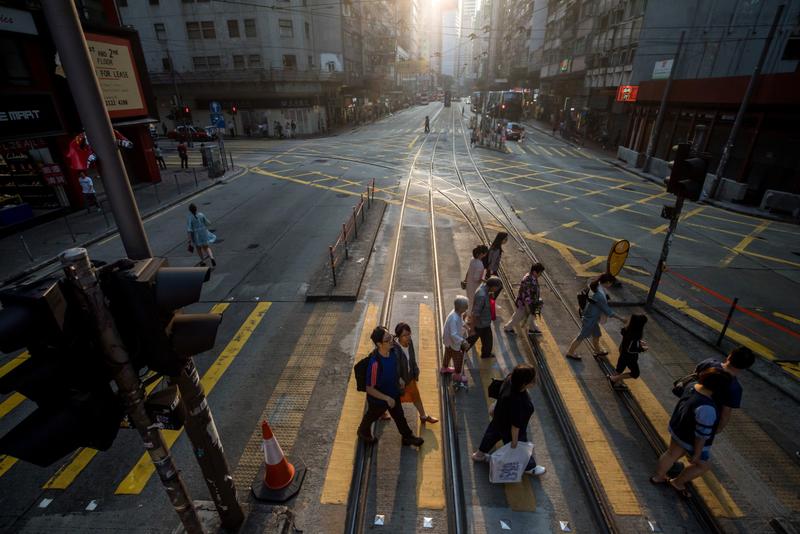 Pedestrians cross a road in the Wan Chai district of Hong Kong, China, Oct 27, 2019. (PAUL YEUNG / BLOOMBERG)
Pedestrians cross a road in the Wan Chai district of Hong Kong, China, Oct 27, 2019. (PAUL YEUNG / BLOOMBERG)
Hong Kong’s jobless rate likely rose to its highest level in nine years in February as the novel coronavirus outbreak and plunges in asset prices weighed on the city’s economy, according to Financial Secretary Paul Chan.
Hotels, retailers, restaurants and construction are among the industries that were hit hardest as companies shorten hours and shutter operations, Chan wrote in a blog on Sunday. He warned that the underemployment rate is also on the rise.
Chan urged lawmakers as soon as possible to approve infrastructure projects worth about HK$50 billion to create more jobs
ALSO READ: Hong Kong jobless rate rises to 3.4%, highest since 2016
Chan’s remarks come as Hong Kong is set to release February jobs data on Tuesday. The unemployment rate is forecast to reach 3.6 percent, the highest since June 2011, based on a survey of economists. The gauge has climbed for four straight months in its longest string of increases since 2009.
The government last month unveiled a HK$120 billion (US$15.5 billion) budget including a one-time handout of HK$10,000 to each permanent resident of the city age 18 or older.
Chan urged lawmakers as soon as possible to approve infrastructure projects worth about HK$50 billion to create more jobs.
The Hong Kong Monetary Authority on Monday reduced its benchmark interest rate, following the Federal Reserve’s move. The US central bank cut its rate by a full percentage point to near zero and pledged to boost bond holdings by at least US$700 billion.
READ MORE: HK’s jobless rate rises to 3.3 percent
Chan said before the US Fed’s move that exchange rates and interest rates in Hong Kong have been stable despite market volatility.
“There’s ample liquidity in the banking system with sufficient capital support,” he said. “We will continue to monitor the market situation and assess any potential systematic risks. When necessary, we can further strengthen defensive measures to ensure financial stability.”


